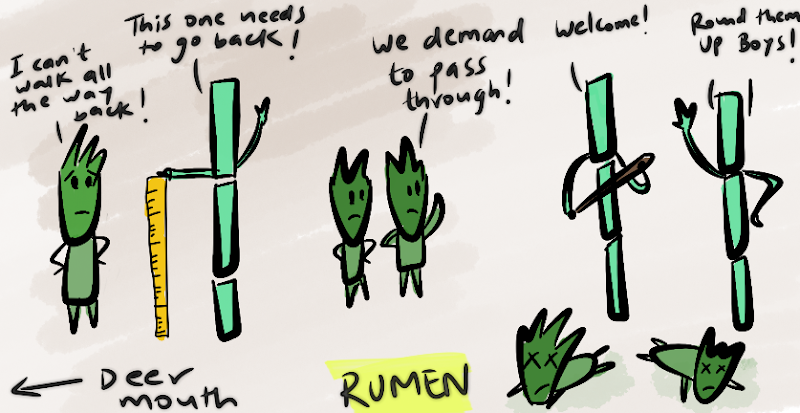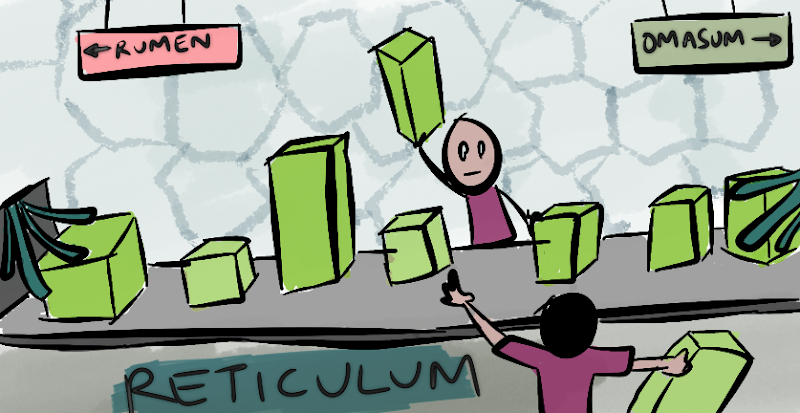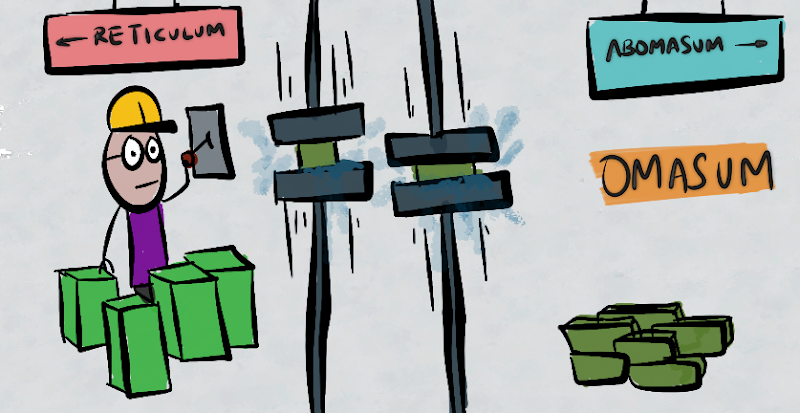Last time when I went to Trader Joe's I started looking for things I don't really need. Who in their right state of mind goes grocery shopping and buys just the essentials, that is so 2019.
This time I spotted Lactose Free milk, and I wondered if it was simply watered down white paint, so I decided to check the ingredients.
This is how it works in your body and why this milk is appealing to folks who are lactose intolerant.
Because leaves and grasses contain cellulose which is another form of sugar. Cellulose is found in cell walls of plants and if humans or other animals eat it, it won't get digested and will get a TSA PreCheck treatment in the body. This is because none of the vertebrates can produce cellulase which is the enzyme required to digest cellulose.
So how do deer and cows spend their entire lives eating these grasses if they can't digest it? Has no one told them this is a big scam that they are victims to?
Turns out, ruminants like deer and cows had a secret deal with microorganisms in a shady back alley while humans and other animals were celebrating Mardi Gras.
This deal opened up new horizons for both parties since it allowed the microorganisms a nice place to stay without paying rent and the ruminants got the capability to digest plant leaves.
The 1st chamber is called rumen which is used for storage and fermentation.
A deer on spotting food will eat the same way humans will shop on black friday, not think a lot just collect as much as possible.
Below is a black-tailed deer munching away before the deal expires.
Once the food has been broken down, it will move on to the 2nd chamber which is called the reticulum. This chamber has a honeycomb texture and will act as the quality control department and only allow small particles to the omasum chamber, larger and undigested food particles will go back to the Rumen and to the mouth for another round of chewing.
The food is then passed on to the intestine for some more digestion and finally all the undigested stuff will be expelled as poop.
Here is another black-tailed deer wiping the sauce off its face using its legs.











No comments:
Post a Comment
Did you learn something new in this post? Let us know in the comments below